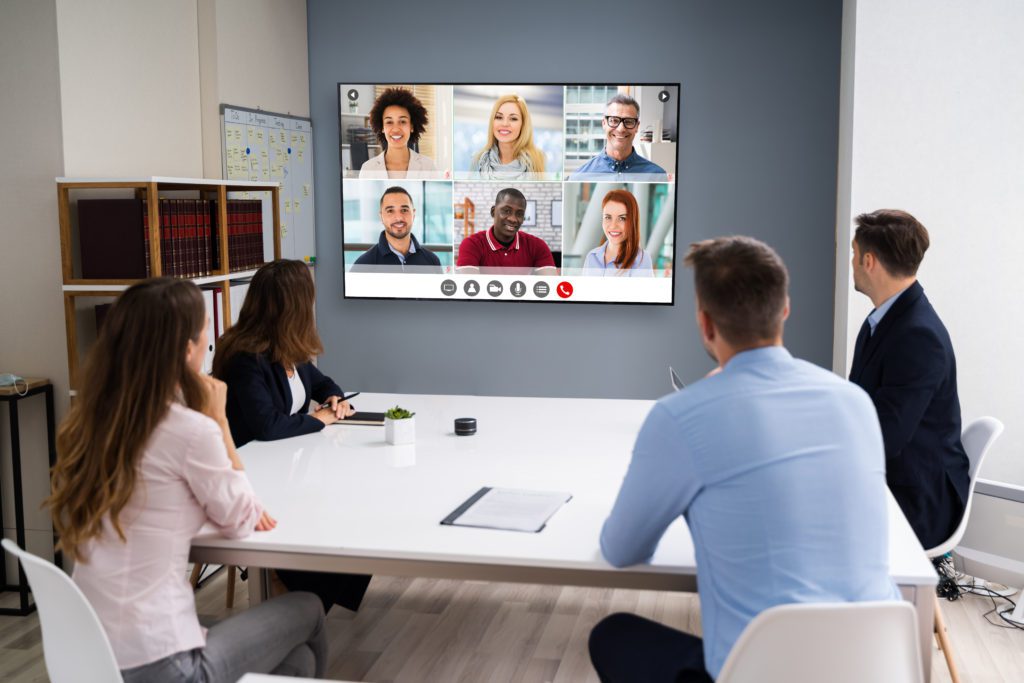While many people are gathering for in-person meetings in their workplaces, remote employees still make up a large part of the workforce and need to be able to attend these functions – transitioning work meetings and other events to a hybrid model. Organizing hybrid meetings and work functions can seem simple, but the set-up needs to be airtight to avoid remote employees feeling second-rate.
When the majority of employees in corporate offices were working from home, a meeting could simply be scheduled by sending out a Zoom, Teams, or another online meeting invitation. As certain team members now return to the office, while others work from home permanently, a better and more holistic solution should be implemented to avoid remote employees feeling out of the loop or second-rate. Employers need to make a few considerations to allow all employees to feel included and avoid any roadblocks during an important meeting.
Plan ahead and plan accordingly.
Hybrid meetings are a great addition to any workplace – but they also come with additional challenges. As you prepare for any hybrid meeting, you must keep in mind that you need to simultaneously develop two plans – one for the in-person aspect and one for the virtual element. The key to success is ensuring that these plans work together, not against each other. For example, conducting an in-person activity needs to be replicated for online participants and vice versa. This planning stage aims to guarantee that no one has the feeling of “FOMO” (Fear of Missing Out) during your meeting time.
Set up logistics and goals
Next, begin considering what physical materials you will need to execute your prepared plans: the number of chairs and tables, audio and visual equipment requirements, microphones for online and in-person participants, and probably much more. Remember, anything happening in person will also need to be recreated online. For example, suppose you plan to show a visual presentation or facilitate breakout sessions in person. In that case, there will need to be a way for online participants to view and participate in those meetings.
During this planning stage, goals aligning with the success of your meeting should also be established. These will also be different for your in-person and online aspects as with the previous stage. However, it is still important to create these and even share them with your meeting participants before the meeting – however they plan on joining. Setting these goals will give all participants a clear overview of the meeting’s purpose and establish that the in-person and hybrid participants are on equal footing.
Divide and conquer roles
With microphones, video or phone call equipment, presentations, and more, having established roles and responsibilities is vital to everything running smoothly. Problems will undoubtedly arise for your in-person and online meeting attendees, so having a designated person or team ready to handle these issues ensures they can be handled quickly and with little interruption to the meeting.
Especially in a large hybrid meeting, having one person dedicated to the in-person aspect and another to the virtual element makes for a more frictionless experience. This division of work ensures that team members aren’t pulled in too many directions. At the same time, the immediate needs are met for in-person and online participants should any issues arise that impact their interaction.
In today’s revamped workforce, the hybrid model is not only the present solution but also the future. Technology is a crucial piece of this workplace model, especially with employees spread across locations and the globe. If you’re looking to design and build the most efficient and productive environments for your team, let us know.
We got you.



